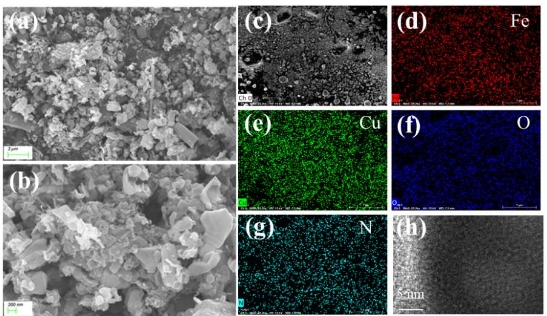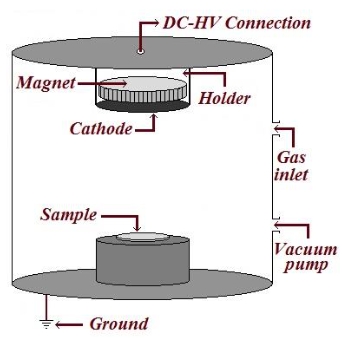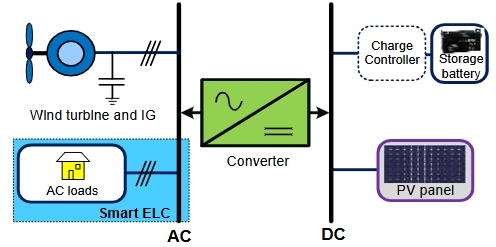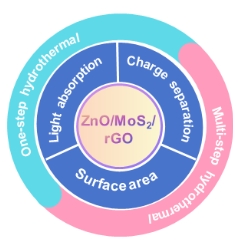Story of carbon nanotube in energy—Booms and lapses?
Abstract
In light of eras of scientific endeavors on carbon nanotubes and related nanomaterials, we notice extending applications of carbon nanotubes from high-tech energy/electronic devices to defense, engineering, and medical fields. Carbon nanotubes, being one of the initial nanocarbon technology breakthroughs, emerged as a frontline competitor for designing advanced energy devices/systems. As per literature so far, carbon nanotubes render valuably high specific surface area/properties, design adaptabilities, structural synergies, low expenses/density/toxicity, interfacial/percolation effects, and desirable energy storage (charge/electron flow, capacity/capacitance, capacity retention, reversible discharge, cyclic span, etc.) and energy conversion (power conversion efficiencies, energy/power density, photovoltaic effects, durability, etc.) parameters for devices. Looking at the up-to-date demand for carbon nanotubes in high-end energy storage and conversion systems (batteries, capacitors, photovoltaics), this perspective manuscript is planned to unveil the actual state-of-the-art and advancements in this field. Despite the success to date, real-world employment of carbon nanotube-derived energy systems seems to rely upon overcoming challenges for integrating these nanomaterials in next-generation energy assemblies. To meet current technological necessities, green-sourced carbon nanotube nanomaterials must be practiced for modern and future sustainable energy industries.
References
[1]Das HS, Mishra S, Roymahapatra G. Advanced Nano-Structured Materials for Energy Storage Devices. In: Design, Fabrication, and Significance of Advanced Nanostructured Materials. Engineering Science Reference; 2024.
[2]Vishnu M, Anooplal B, Baby R. Experimental exploration of nano-phase change material composites for thermal management in Lithium-ion batteries. Energy Storage and Conversion. 2024; 2(2): 309. doi: 10.59400/esc.v2i2.309
[3]Nitodas SS, Shah R, Das M. Research Advancements in the Mechanical Performance and Functional Properties of Nanocomposites Reinforced with Surface-Modified Carbon Nanotubes: A Review. Applied Sciences. 2025; 15(1): 374. doi: 10.3390/app15010374
[4]Hughes KJ, Iyer KA, Bird RE, et al. Review of Carbon Nanotube Research and Development: Materials and Emerging Applications. ACS Applied Nano Materials. 2024; 7(16): 18695-18713. doi: 10.1021/acsanm.4c02721
[5]Qin LC, Zhao X, Hirahara K, et al. The smallest carbon nanotube. Nature. 2000; 408(6808): 50-50. doi: 10.1038/35040699
[6]Ren X, Hussain MI, Chang Y, et al. State-of-the-Art Review on Amorphous Carbon Nanotubes: Synthesis, Structure, and Application. International Journal of Molecular Sciences. 2023; 24(24): 17239. doi: 10.3390/ijms242417239
[7]Piao Y, Tondare VN, Davis CS, et al. Comparative study of multiwall carbon nanotube nanocomposites by Raman, SEM, and XPS measurement techniques. Composites Science and Technology. 2021; 208: 108753. doi: 10.1016/j.compscitech.2021.108753
[8]Yahyazadeh A, Nanda S, Dalai AK. Carbon Nanotubes: A Review of Synthesis Methods and Applications. Reactions. 2024; 5(3): 429-451. doi: 10.3390/reactions5030022
[9]Liu B, Sun J, Zhao J, et al. Hybrid graphene and carbon nanotube–reinforced composites: polymer, metal, and ceramic matrices. Advanced Composites and Hybrid Materials. 2024; 8(1). doi: 10.1007/s42114-024-01074-3
[10]Oluigbo CJ, Xu Y, Louis H, et al. Controllable fabrication of abundant nickel-nitrogen doped CNT electrocatalyst for robust hydrogen evolution reaction. Applied Surface Science. 2021; 562: 150161. doi: 10.1016/j.apsusc.2021.150161
[11]Chen L, Wu P, Zhu C, et al. Fabrication of carbon nanotubes encapsulated cobalt phosphide on graphene: Cobalt promoted hydrogen evolution reaction performance. Electrochimica Acta. 2020; 330: 135213. doi: 10.1016/j.electacta.2019.135213
[12]Qazi RA, Ullah N, Bibi N, et al. Amine-Functionalized MWCNTs for the Removal of Mordant Black 11 Dye. Water, Air, & Soil Pollution. 2023; 234(10). doi: 10.1007/s11270-023-06662-5
[13]Singh KK, Kachhi B, Singh A, et al. Role of carbon nanotubes as energy storage materials. International Journal of New Chemistry. 2025; 12(4): 635-645.
[14]Chen Y, Li X, Park K, et al. Hollow Carbon-Nanotube/Carbon-Nanofiber Hybrid Anodes for Li-Ion Batteries. Journal of the American Chemical Society. 2013; 135(44): 16280-16283. doi: 10.1021/ja408421n
[15]Chen Z, To JWF, Wang C, et al. A Three‐Dimensionally Interconnected Carbon Nanotube–Conducting Polymer Hydrogel Network for High‐Performance Flexible Battery Electrodes. Advanced Energy Materials. 2014; 4(12). doi: 10.1002/aenm.201400207
[16]Liu Z, Lin N, Wu Y, et al. Rice husk-based activated carbon/carbon nanotubes composites for synergistically enhancing the performance of lead-carbon batteries. Carbon. 2025; 231: 119714. doi: 10.1016/j.carbon.2024.119714
[17]Ali G, Mirza M, Mustafa GM. CNT-metal oxide composites as cathode materials for Li-ion batteries. Nanostructured Lithium-ion Battery Materials; 2025.
[18]Manfo TA, Laaksonen H. A review of carbon-based hybrid materials for supercapacitors. Carbon. 2025; 235: 120043. doi: 10.1016/j.carbon.2025.120043
[19]Liu M, Lin H, Sun L, et al. Enhanced charge storage in supercapacitors using carbon nanotubes and N-doped graphene quantum dots-modified (NiMn)Co2O4. Journal of Colloid and Interface Science. 2025; 678: 763-771. doi: 10.1016/j.jcis.2024.09.039
[20]Chahal BCB. Advanced Materials for Renewable Energy Applications: Enhancing Solar Cell Efficiency throughNanostructures. Shodh Prakashan: Journal of Engineering & Scientific Research. 2025; 1(1): 12-26.
[21]Khan WA, Kazi SN, Chowdhury ZZ, et al. Carbon nanomaterials in coatings: A review focusing thin film photovoltaic solar cells. Materials Science in Semiconductor Processing. 2025; 185: 108929. doi: 10.1016/j.mssp.2024.108929
[22]Wang J, Gao X, Zhuansun Y, et al. Buried interface passivation with bis (3-aminopyrid-2-yl) sulfide for carbon-based perovskite solar cells. Journal of Materials Chemistry C. 2025; 8.
[23]Zhang Y, Jia Q, Ma M, et al. Optimizing 2H–MoS2 through organic intercalation and constructing heterostructures with MXene towards enhanced supercapacitor performance. Materials Today Chemistry. 2025; 43: 102477. doi: 10.1016/j.mtchem.2024.102477
[24]Singh P, Singh A, Saini R, et al. Advancements in graphene-based nanostructured conducting polymer hybrid composite electrodes for high-performance supercapacitors. Journal of Power Sources. 2025; 630: 236176. doi: 10.1016/j.jpowsour.2025.236176
[25]Si J, Zhang P, Zhang Z. Road map for, and technical challenges of, carbon-nanotube integrated circuit technology. National Science Review. 2023; 11(3). doi: 10.1093/nsr/nwad261
[26]Zhang X, Han G, Zhu S. Flash Nitrogen‐Doped Carbon Nanotubes for Energy Storage and Conversion. Small. 2023; 20(3). doi: 10.1002/smll.202305406
[27]Oluigbo CJ, Xie M, Ullah N, et al. Novel one-step synthesis of nickel encapsulated carbon nanotubes as efficient electrocatalyst for hydrogen evolution reaction. International Journal of Hydrogen Energy. 2019; 44(5): 2685-2693. doi: 10.1016/j.ijhydene.2018.11.215
[28]Oluigbo CJ, Ullah N, Xie M, et al. Incorporation of pyridinic and graphitic N to Ni@ CNTs : As a competent electrocatalyst for hydrogen evolution reaction. International Journal of Energy Research. 2020; 44(11): 9157-9165. doi: 10.1002/er.5536
[29]Chen Y, Lu C, Yuan S, et al. N-doped carbon nanotubes and CoS@NC composites as a multifunctional separator modifier for advanced lithium-sulfur batteries. Journal of Colloid and Interface Science. 2025; 680: 405-417. doi: 10.1016/j.jcis.2024.11.108
[30]Liu J, Wu H, Tang J, et al. Heteroatom doped graphitic carbon nanotubes as freestanding anodes for advanced potassium-ion batteries. Nanotechnology. 2024; 35(50): 505402. doi: 10.1088/1361-6528/ad7b3b
[31]Chen T, Zhang Z, Cheng B, et al. Self-Templated Formation of Interlaced Carbon Nanotubes Threaded Hollow Co3S4 Nanoboxes for High-Rate and Heat-Resistant Lithium–Sulfur Batteries. Journal of the American Chemical Society. 2017; 139(36): 12710-12715. doi: 10.1021/jacs.7b06973
[32]Ma L, Lin H, Zhang W, et al. Nitrogen-Doped Carbon Nanotube Forests Planted on Cobalt Nanoflowers as Polysulfide Mediator for Ultralow Self-Discharge and High Areal-Capacity Lithium–Sulfur Batteries. Nano Letters. 2018; 18(12): 7949-7954. doi: 10.1021/acs.nanolett.8b03906
[33]Yan W, Yu F, Jiang Y, et al. Self‐Assembly Construction of Carbon Nanotube Network‐Threaded Tetrathiafulvalene‐Bridging Covalent Organic Framework Composite Anodes for High‐Performance Hybrid Lithium‐Ion Capacitors. Small Structures. 2022; 3(10). doi: 10.1002/sstr.202200126
[34]Pan ZD, Wang ZL, Rao XY, et al. Synergistic effect of oxygen-deficient Ni3V2O8@carbon nanotubes-modified separator for advanced lithium–sulfur batteries. Springer; 2024.
[35]Abedi M, Alimardani V, Ghasemi Y, et al. Waste-Derived Carbon Nanotubes (CNTs): A Revolutionary Product Toward Energy Applications. Springer; 2025.
[36]Rustamaji H, Prakoso T, Devianto H, et al. Recent status of application of nanocarbon composite materials for electric energy storage and conversion: A mini review. Future Batteries. 2025; 5: 100028. doi: 10.1016/j.fub.2025.100028
Copyright (c) 2025 Author(s)

This work is licensed under a Creative Commons Attribution 4.0 International License.










